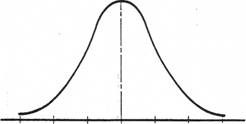Course Title: Statistical Methods for Process Improvement:
Part 2: Using the Normal Distribution
Davis M. Woodruff, PE, CMC
Course Outline
This 1 hour course presents a review and overview of practical and simple statistical methods that can be used for process improvement. Practical how-to information for using the normal distribution in a variety of settings is presented. It is not a theoretical statistics course and is intended as a review/overview type course which is practical and oriented to industry. To get the most benefit from this course, the participant should have completed Part 1: Using Data for Process Improvement or have been introduced to statistical methods in other courses or training.
This course will also provide help organizations that are either ISO 9001, 14001, 13485, TS 16949 or AS 9100 registered or seeking registration to meet the requirements for process and product monitoring and measurement as well as data analysis and continual improvement found in the standards.
This course discusses the following topics:
- Introduction to the Normal Distribution
- Characteristics of the Normal Distribution
- Significance of the Mean and Standard Deviation
- Areas Under the Curve
- Z-Scores: Using the Standard Normal Curve
- Examples of Using Z-scores
Practical examples and illustrations are used and these process analysis tools may be adapted to any business or business model.
This course includes
a multiple choice quiz at the end,
Learning Objective
At the conclusion of this course, the participant will:
- Understand the characteristics of the normal distribution;
- Know the significance of the mean and standard deviation;
- Understand how the Z-scores are calculated and interpreted; and
- Be able to use Z-scores for process analysis.
Intended Audience
Any professional who is involved in process or product monitoring or measurement or who needs to understand how to apply statistical methods to sustain effective continual improvements. Engineers, consultants and managers interested in understanding process or product monitoring and measurement as a part of the CI process and to more effectively manage your business using facts will benefit from this course.
Benefit to Attendees
Course participants will learn how to use simple, powerful and practical statistical methods for process improvement that can guide fact based decision making.
Course Introduction
The primary distribution utilized in Statistical Process Control and in using statistical methods for process analysis is the normal distribution. This distribution occupies a prominent place in statistics for the following reasons:
- The distribution is applicable to many situations in which it is necessary to make inferences from samples taken from a population.
- A normal distribution comes close to fitting the actual observed frequency distribution of many phenomena (weights, heights, times, etc.) and it adequately describes outputs from many processes (dimensions, yields, etc.).
The distribution, a probability density function, resembles a bell-shaped curve as shown below.

Normal Distribution Curve
This One hour course presents a practical and common sense approach to using statistics for process analysis as the second of a five part series.
Course Content
In this lesson, you are required to download and study the following course content in PDF format:
Course Title: Statistical Methods for Process Improvement: Part 2: Using the Normal Distribution
Please click on the above underlined hypertext to view, download or print the document for your study. Because of the large file size, we recommend that you first save the file to your computer by right clicking the mouse and choosing "Save Target As ...", and then open the file in Adobe Acrobat Reader. If you still experience any difficulty in downloading or opening this file, you may need to close some applications or reboot your computer to free up some memory.
Course Summary
This five part series of courses will provide the information necessary to apply fundamental statistical concepts and methods for process improvement. Statistics can be theoretical and boring. In fact, many engineers dreaded taking “stats” in college, but now find that practical statistics are essential in today’s work place. This course, part 2, as well as the other 4 parts will provide an understanding of how to really use statistics for process improvement. This is not a course in probability theory or theoretical statistics, but rather in how to apply these methods to improve your processes.
Related Links and References
A suggested reading list and detailed glossary is included with each of these courses. Also, there are several articles posted on www.daviswoodruff.com that can be downloaded and used along with these courses.
Quiz
Once you finish studying the above course content, you need to take a quiz to obtain the PDH credits.
DISCLAIMER: The materials contained in the online course are not intended as a representation or warranty on the part of PDH Center or any other person/organization named herein. The materials are for general information only. They are not a substitute for competent professional advice. Application of this information to a specific project should be reviewed by a registered architect and/or professional engineer/surveyor. Anyone making use of the information set forth herein does so at their own risk and assumes any and all resulting liability arising therefrom.
